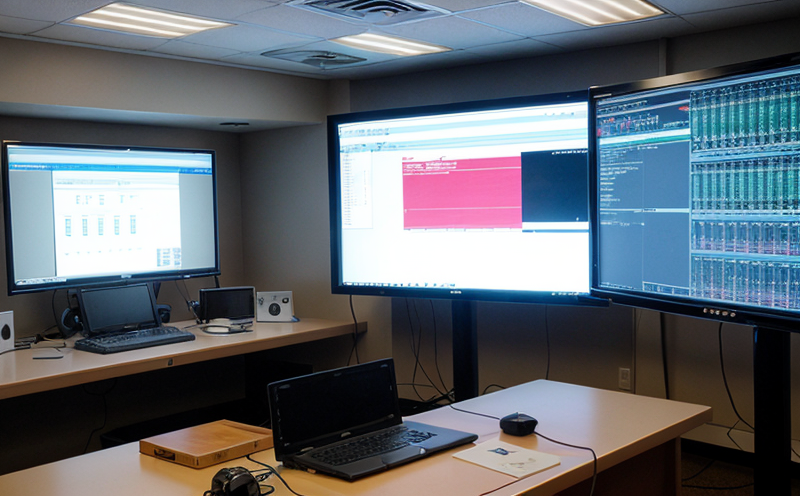EN 50129 Validation Testing of Fail-Safe Design Principles
The European Standard EN 50129 provides a framework for ensuring the dependability and safety-critical aspects of signaling systems used in railway transportation. This standard is essential for designers, manufacturers, and operators to ensure that their products meet stringent fail-safe design principles.
EN 50129 validation testing focuses on verifying whether a system adheres to these critical standards. Fail-safe designs are particularly crucial because they prevent the escalation of failures into catastrophic events. In railway signaling systems, any malfunction could lead to significant safety risks and potential derailments or accidents.
The testing process involves a series of rigorous checks that simulate real-world conditions to ensure the system’s reliability in critical scenarios. This includes evaluating the system's ability to recover from faults without compromising safety, ensuring that the system remains operational even under adverse conditions, and verifying that the system can be easily maintained.
During EN 50129 testing, we use a combination of static and dynamic tests to evaluate various aspects of the fail-safe design. Static tests focus on the system's architecture and configuration, while dynamic tests assess its performance under simulated operational conditions. This comprehensive approach ensures that all potential failure modes are identified and addressed.
One of the key aspects of EN 50129 validation is the evaluation of fault tolerance. Fault tolerance refers to a system’s ability to continue operating correctly even when some components fail. In railway signaling, this means ensuring that the system can still provide safe operation in case of component failures or malfunctions.
Another critical element is the assessment of maintainability. A system must be designed and configured so that it can be easily maintained without compromising safety. This includes regular updates, repairs, and replacements of components. Testing for maintainability ensures that operators have access to all necessary tools and information to perform maintenance tasks efficiently.
The testing process also involves evaluating the system's ability to recover from faults. Recovery refers to a system’s capability to return to its normal operating state after an error or failure has been detected. This is particularly important in railway signaling, where the system must be able to quickly and safely transition back to safe operations.
Compliance with EN 50129 ensures that railway signaling systems meet high standards of safety and reliability. This standard helps to prevent potential failures by ensuring that all critical components are designed and implemented according to best practices. By adhering to this standard, manufacturers can demonstrate their commitment to producing safe and dependable products.
EN 50129 validation testing is not just about compliance; it’s about building trust in the industry. By demonstrating adherence to these stringent standards, manufacturers can gain a competitive edge by showcasing their commitment to quality and safety. This can lead to increased market share, improved reputation, and greater customer confidence.
In conclusion, EN 50129 validation testing is an essential process for ensuring the dependability of railway signaling systems. By adhering to these fail-safe design principles, manufacturers can produce products that are reliable, safe, and capable of withstanding real-world challenges. This testing ensures that railway operators have access to systems they can trust, which ultimately contributes to a safer and more efficient transportation network.
Eurolab Advantages
- We employ highly experienced engineers who are experts in EN 50129 compliance.
- Our state-of-the-art laboratories offer a controlled environment for testing signaling systems under realistic conditions.
- We provide detailed reports and comprehensive analysis of test results to guide continuous improvement.
- Our team offers expert advice on how to optimize fail-safe design principles in your system.
Why Choose This Test
Choosing EN 50129 validation testing for fail-safe design principles is crucial for several reasons:
This standard ensures that your signaling system meets the highest safety and reliability standards.
Compliance with EN 50129 can help you gain a competitive edge in the market by demonstrating your commitment to quality and safety.
The testing process provides detailed insights into potential weaknesses, allowing for continuous improvement of your system.
EN 50129 validation testing helps to build trust with operators and customers, leading to increased market confidence.
Environmental and Sustainability Contributions
By ensuring the reliability of railway signaling systems, EN 50129 testing supports safer transportation, which can lead to more efficient use of resources.
The standard helps reduce the risk of accidents and derailments, minimizing environmental impact from potential incidents.
In addition to these direct benefits, EN 50129 testing also contributes indirectly by promoting sustainable practices in railway signaling design. By ensuring that systems are reliable and safe, we can extend the operational life of equipment, reducing the need for frequent replacements and minimizing waste.





